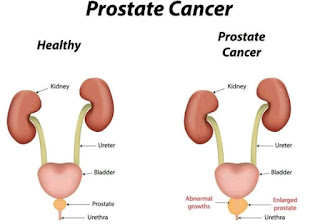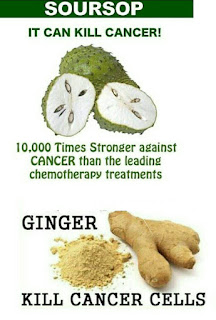In time past, infertility is often traced to and pinned on the woman, but with proper enlightenment and education it is no more news that men can also be infertile. Infertility is a widespread problem and it is becoming an epidemic that most be dealt with.
Male infertility refers to a male inability to make a fertile female pregnant.
Female infertility is simply described as not being able to get pregnant after one year of trying, some women will get pregnant but are unable to stay pregnant because of miscarriage, they are also categorized infertile.
Getting a woman pregnant is one of the simplest biological process, but it can also be the most experienced nightmares if after a year of marriage and unprotected sex the woman cannot make babiesFemale infertility is simply described as not being able to get pregnant after one year of trying, some women will get pregnant but are unable to stay pregnant because of miscarriage, they are also categorized infertile.
Causes of male infertility
Male infertility is most often the result of a low sperm count or anatomical abnormalities. Low sperm count is usually caused by problems that affects either sperm production or sperm transport and it generally relies on the quality and quantity of the man. It is believed that infertility problem lies more with the male partner.
Ii is estimated that one in 20 men has some kind of fertility problem with low numbers of sperm in his ejaculate, however only about one in every 100 men have no sperm in his ejaculate.
Risk factors for male infertility
Ii is estimated that one in 20 men has some kind of fertility problem with low numbers of sperm in his ejaculate, however only about one in every 100 men have no sperm in his ejaculate.
Risk factors for male infertility
- Endocrine disorder - The quality and quantity of the sperm can be disrupted by bispheonl A. a compound found in plastic bottles and cans
- Radiation or excessive heat from cellphones, laptops etc.- The radiation, vibration and excessive heat can decrease the sperm potency by 15%
- Prolong fever- Exposure to high temprature because of prolong fever
- Testicle wasting - Infection such as mumps may occur it causes the lower jaw to be swollen and the testes to enlarge and shrink, this germ destroy the capacity of the testes
- Obesity - Obesity also can reduce sperm count
- Stress - The quality of sperm is directly associated with the quality of your overall health and state of mind.
- High temperature - Exposure to high temperature decreases the sperm count alarmingly
- Smoking - This can turn you impotent by reducing the blood flow to the private part due to decreasing blood vessel
- STDs - Infection account for about 90% of male infertility e.g gonorrhea, syphilis, even staphylococcus, all these can depopulate the sperm or cause scarring to reduce sperm traffic
- Hormones - Sex hormone may crash and also run out of balance with one another leading to infertility problem and male menopause
- Sperm structure - The sperm is divided into three basic parts, head, neck and tail, the tail help the sperm to swim to the egg, but when sperm cells are weak, the motility rate is very slow
- Alcohol consumption - This have high risk in damaging sperm quality
- Exposure to toxins and heavy metals destroy the sperm
Most problems of female infertility results from problems with producing eggs, which may be as a result of premature ovarian failure, blocked or damaged fallopian tubes, endometriosis, uterian fibriods, acidic virgina, cervical issues, some women may develop anti-bodies to their partners sperm thereby becoming allergic to it and sometimes unexplained infertility
Female infertility risk factors
- STDs
- Age
- Obesity
- Underweight women
- Smoking
- Alcohol consumption
- Environmental factors
- Hormonal problems
- Physical problems
- Lifestyle
- Psychological problems such anxiety, fear of motherhood, stress etc.
- The sperm must be of the right count (head, body, tail)
- the sperm must be able to swim vigorously (no accident)
- the sperm must be agglutinate (gum)
- There must be enough food in the semen for the sperm
- The sperm must be alkaline
- The sperm duct must not be blocked
- The sperm must have enough antioxidant to protect against free radicals
Symptoms includes:
- No periods, irregular periods, or irregular bleeding
- No ovulation or irregular ovulation
- Obesity or weight gain
- Underweight women
- High blood pressure
- Pre-diabetes
- Abnormal cholesterol with high triglycerides
- Excess hair growth on the body and face
- Acne or oily skin
The first step in dealing with infirtility is to treat any reproductive tract disorder that may be present.
- Treating infections
- Dealing with emotional causes
- Dietary changes
- Lifestyle changes
- Exercise
- Avoid caffinated drinks, alcohol and smoking
- Mind and body relaxation
- Men should not wear tight panties because it increases the heat level of the scrotal region and may likely affects or obstructs sperm production
- Chiropractic adjustment can make a great difference in both men and women
- Acupuncture therapy will stimulate the conception vessel
Men should eat
- Unripe roasted plantain with groundnuts for erection
- Maca root, onion, honey and saw palmetto for boosting fertility
- Oysters for sperm production
- Dark chocolate for antioxidants
- Garlic for sperm motility
- Banana for libido
- Broccoli for sperm swim
- Walnuts for sperm count
- Ginseng for testoterone
Women should eat
- To improve fertility: milk thistles, maca root, dandelion, leafy green
- Seaweed nurishes organs vital to fertility health
- Omega 3 fatty acids regulates blood flow to the reproductive organs
- Oysters increase libido and a great source to fertility
- Beans increases fertility and libido
- Leafy greens increase ovulation
- Maca root increases fertility
- Yam: some species of yam have ovulation stimulating substance that can help boost fertility























